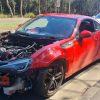
Mastering the limitations and applications of linear and switching regulators optimises design, ensuring efficiency, longevity, and reliable performance for PCBs.
Voltage regulators are indispensable in electronics, providing stability and precision in power management for electrical circuits and hardware PCBs. These circuits convert one DC voltage to another with precision, making them indispensable in designing and troubleshooting electronic systems. From the basics of linear and switching regulators to selecting the right type for your design, while the focus here is on DC-DC voltage regulators, it is important to note that some regulators also handle AC-AC or AC-DC conversions, expanding their versatility in power management. Key aspects include working principles, types of regulators, feedback control mechanisms, and selection criteria, alongside challenges, limitations, and industry applications.
At their core, voltage regulators maintain a steady output voltage despite variations in input or load conditions, a necessity for reliable electronic performance. Linear regulators, known for simplicity and low noise, shine in applications requiring clean output and minimal complexity. Switching regulators, with their high efficiency and versatility, dominate where performance and power savings are paramount. This discussion highlights how each type works, their advantages, and where they fit best.
Understanding the intricacies of control mechanisms, including feedback loops and power stages, is key to optimising a regulator’s performance. Alongside these fundamentals, essential design parameters—like thermal management, quiescent current, and switching frequency—shape how regulators handle real-world demands. Whether powering wearables, IoT devices, or high-performance electronics, voltage regulators are the linchpins of stable and efficient designs.
Types of voltage regulators
DC-DC VR come in two main types: linear and switching. Both regulate the system’s voltage, but linear regulators are less efficient than switching regulators. Efficient switching regulators transfer most of the input power to the output with minimal energy loss.
1. Liner regulators
A linear VR employs an active pass element (like an N or P channel MOSFET) controlled by a high-gain operational amplifier. It maintains a stable Vout by adjusting the pass element’s resistance. This adjustment is based on comparing an internal voltage reference (Vref) with the sampled Vout, effectively driving the error to zero.
Linear regulators, as step-down converters, inherently produce Vout lower than their inputs. Despite this limitation, they offer several benefits such as simplicity in design, reliability, cost-effectiveness, low noise, and minimal Vout fluctuations.
A widely used configuration in linear regulators is the low-dropout (LDO) regulator. Unlike conventional linear regulators which typically require the Vin to exceed the Vout by at least 2V, an LDO regulator is engineered to function with a minimal voltage difference between its input – output terminals, sometimes as narrow as 100mV.
2. Switching regulators
Designing a switching regulator circuit is generally more complex than designing a linear regulator. It involves selecting external component values, tuning control loops for stability, and meticulous layout planning. Switching regulators can function as step-down converters, step-up converters, or a combination of both, providing greater versatility than linear regulators.
Switching regulators offer several advantages, including high efficiency, improved thermal performance, the ability to handle higher currents, and a wider range of Vin /Vout. Depending on the specific application, they can achieve efficiencies exceeding 95%.
Further, switching regulators encompass three topologies where each topology serves distinct purposes in power regulation, such as:
1. Step-down converter (Buck converter)
It reduces a higher Vin to a lower Vout.
2. Step-up converters (Boost converters)
It increases a lower Vin to a higher Vout.
3. Buck-Boost converters
It integrates the capabilities of both buck and boost converters into a single-stage system by keeping the Vout steady over a wide range of Vin, whether those inputs are higher or lower than the desired Vout.
Voltage regulator control
The essential components of a linear regulator include a pass transistor, an error amplifier, a Vref, and a resistor feedback network. Two resistors establish a reference point at one input of the error amplifier, which monitors a portion of the Vout. The other input of the error amplifier connects to a stable Vref. If there is any deviation between the sampled Vout and Vref, the error amplifier adjusts the resistance of the pass transistor to maintain a consistent Vout .Typically, linear regulators require only an external input and output capacitor, simplifying their implementation.
Whereas a switching regulator requires a more intricate circuit design. Its power stage switches between Vin and ground to generate the voltage the load device requires. Like a linear regulator, an operational amplifier monitors the DC Vout through a feedback network and continuously checks it against an internal Vref. The resulting error signal is amplified, compensated, and filtered. This signal then adjusts the PWM (pulse width modulation) duty cycle to regulate the charge delivered to the load, maintaining a stable Vout. For instance, if a sudden increase in load current causes a drop in the Vout, the control loop increases the PWM duty cycle to provide more charge to the load, restoring the Vout to its regulated level.
Basic EE parameters for a voltage regulator IC
When selecting a VR, key considerations include the input, output, and output current, which dictate the suitable VR topology for an IC.
Additional parameters such as quiescent current, switching frequency, thermal resistance, and feedback voltage may also be significant depending on the application
- Quiescent current is crucial for optimising efficiency during light-load or standby conditions.
Higher switching frequencies can lead to more compact system designs.
Thermal resistance is critical in managing heat dissipation from the device across the system. All losses must be accounted for when determining maximum operating temperatures for controllers with internal MOSFETs.
- Feedback voltage is another critical parameter determining the minimum Vout the regulator can reliably support. Accurate Vref specifications are essential for precise Vout regulation.
Picking the right voltage regulator
The designer shouldgrasp critical parameters before choosing VR such as Vin, Vout , and (Iout), along with system priorities like efficiency, performance, and cost. Additional features like power good indication (PG) or enable control may also be considered..
Once these requirements are established, designers can utilise a parametric search table to identify the optimal device. This tool is invaluable as it presents various features and package options that align with the application’s specific parameters.
Datasheets provide essential calculations for component values such as output capacitance, output inductance, feedback resistance, and other vital system components needed for implementation.
Navigating the limitations of voltage regulators
Linear regulators suffer inefficiency due to significant power dissipation, like the voltage drop across a resistor. For example, converting from 5V input to 3V output results in a 2V drop, limiting efficiency to 60%. This makes linear regulators more suitable for applications with smaller input-to-output differentials. Managing power dissipation is critical to prevent overheating and component damage, especially with higher Vin.
Unlike switching regulators, which offer versatile step-up (boost), step-down (buck), and buck-boost conversions, linear regulators only support buck conversion. While switching regulators are highly efficient, they tend to be less cost-effective, larger, and more complex and can introduce noise if external components are not carefully chosen. Noise can significantly impact circuit performance and electromagnetic interference (EMI) characteristics.
Real-world applications of linear and switching regulators
Linear regulators are often used in cost-sensitive, noise-sensitive, low-current, or space-constrained applications. Some examples include consumer electronics such as headphones, wearables, and Internet-of-Things (IoT) devices. For instance, a hearing aid could use a linear regulator because it does not have a switching element that could create unwanted noise and interfere with the device’s performance. Moreover, if designers are mainly interested in creating a low-cost application, they need not be as concerned with power dissipation and can rely on a linear regulator.
Switching regulators, conversely, is beneficial for general applications and are especially useful in applications that need efficiency and performance. When the application requires a sizeable step-down solution, a switching regulator is a strategic choice, as it can prevent high power dissipation that could damage other electrical components.
DC-DC regulators are indispensable components in modern electronic systems, offering crucial voltage regulation stable and efficient device operation. By converting a wide range of Vin to a precise Vout, these regulators enhance circuits’ performance, reliability, and energy efficiency across various applications, from consumer electronics to industrial systems. The choice between diverse types of DC-DC regulators—linear, switching, or more advanced topologies—depends on specific requirements such as efficiency, size, and load conditions. Understanding the trade-offs and characteristics of each type allows engineers to design more robust and efficient power management solutions. As technology advances, innovations in DC-DC regulation will likely drive further improvements in performance and energy efficiency, paving the way for even more sophisticated and reliable electronic systems.
Kush Desai is Apple Inc.’s Lead Electrical Engineer (iPhone), Cupertino. He has attained a master of science degree in electrical engineering. He is strongly inclined toward electronics device physics and possesses deep expertise in analogue-mixed signal circuit design and signal and power integrity.










